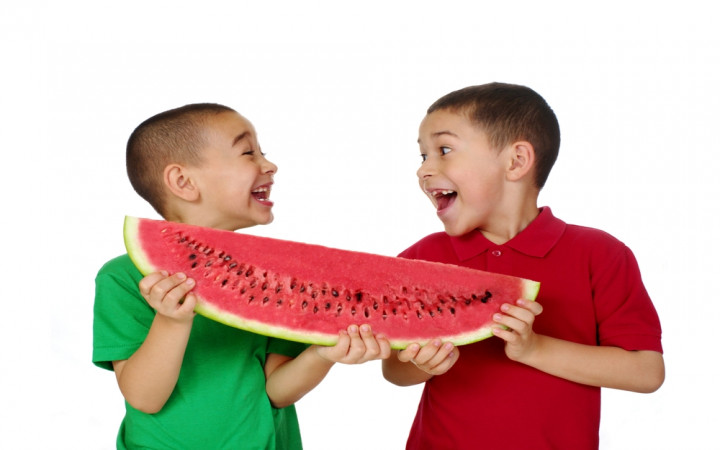Nothing quite says “summer" like a big slice of watermelon on a hot day. Walk with us as we weave our way through the WONDERful world of the watermelon!
Watermelon (Citrullus lanatus) is a vine-like flowering plant. The fruit of this plant — what we commonly call a "watermelon" — is considered by botanists to be a pepo. A pepo is a berry with a thick rind and a fleshy center.
So, botanically, watermelons are fruits, and most people think of them as fruits since they're so sweet and juicy. However, watermelons are grown in gardens like a vegetable. Because they're grown like a vegetable and related to the cucumber, squash, and pumpkin, some people think of them as vegetables.
Experts believe watermelon first developed in the Kalahari Desert region of Southern Africa. Archaeologists have found ancient Egyptian hieroglyphs that show the first watermelon harvest occurred at least 5,000 years ago.
When you bite into a piece of watermelon, you instantly know how it got its name. Each bite of watermelon contains about 92 percent water and 6 percent sugar. Since it consists mostly of water, its name makes perfect sense!
Despite being mostly water with a bit of sugar, watermelon is considered a very healthy snack. Its high water content helps keep you hydrated. Watermelon is also a good source of vitamin C, beta carotene, and lycopene.
Did you know that you can also eat watermelon rinds? It's true!
Although many people don't like their flavor, watermelon rinds are often cooked as a vegetable in China, which produces more watermelons than any other country in the world. The Chinese stir-fry, stew, and even pickle watermelon rinds.
If you ever visit Japan, you might not recognize watermelons if you're looking for large, round melons. Japanese farmers have developed ways to grow watermelons shaped like cubes. In addition to being unique, square watermelons turn out to be much easier to stack.
One of the other famous parts of the watermelon is its seeds. Why? They're used hundreds of times every year during watermelon seed-spitting contests.
No one knows for sure how such interesting competitions got started, but they have become a very popular part of county fairs and summer celebrations all around the country.
So just how far can someone spit a watermelon seed? Pretty far! Jason Schaynot of Georgetown, Texas, holds the world record. In 1995, he spit a watermelon seed an incredible 78 feet 6 inches!




